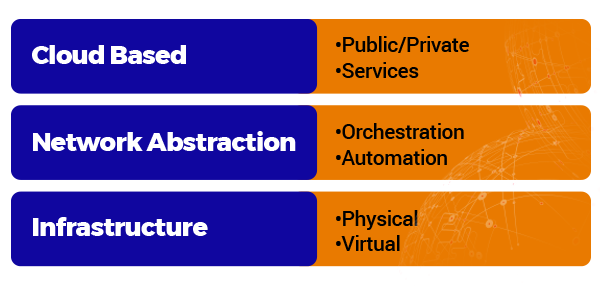The New Normal: Access Network Transformation
To reinvent is to make major changes or improvements to (something) or to present (something) in a different or new way. To transform is to change in composition or structure; to change the outward form or appearance of; or to change in character or condition.
Both verbs describe the necessary path that must be taken by traditional communication service providers to effectively address the unprecedented competition they face for the minds and wallets of consumers. Simply stated, service providers must both transform their networks and reinvent their operating and business models to remain competitive against OTT providers.
Going forward, service providers will need to drive down both the complexity and operating costs of their network, while establishing a new framework to deliver a broad mix of services and user experiences to their customers faster and profitably.
Establishing a New Normal
To remain relevant, service providers must establish a new set of core competencies to change the economics of their business while offering their end users differentiated products and significantly improved user experiences. In other words, they need to establish a new normal that encompasses the infrastructure, network operations, and cloud-based services.

Externally, today’s service networks are defined by the speeds and services they offer, but internally these networks are universally recognized as complex, full of proprietary equipment that only serves a singular purpose), expensive to operate, and difficult to change.
Over the last decade, the access network—driven largely by consumer demand for faster speed—has been subject to regular upgrades as operators introduce new technology to meet the bandwidth demands. In the copper world these upgrades have gone from ADSL to VDSL to Vectoring to G.fast and XG-Fast, while the fiber world has seen BPON, EPON, GPON, 10GEPON, XG-PON, XGS-PON, and now NG-PON2. Cable networks have fared no better, having evolved from DOCSIS 1.0 through DOCSIS 3.1.
Each technology upgrade cycle is a lengthy process, resulting in a 24- to 36-month timeframe for new technology and service introduction. This model no longer works when the competition is web-scale operators such as Google or Amazon who introduce products and services in days rather than months.
A key element to achieving this new normal and beginning the journey towards transformation is the implementation of virtualization technologies. These technologies enable a more flexible architecture that is programmable and automated; elastic and dynamic; open and interoperable; and facilitates rapid speed of change.
Perhaps more importantly, these technologies enable new operational models that drive innovation and allow new applications and services to be introduced without dependencies on the underlying infrastructure.
While the underlying physical layer is fundamental, decoupling services from this layer allows services to be provisioned as cloud applications and delivered over any access media (copper, fiber, coax, or wireless). In short, software will define the service, not the physical network.
It’s not called Software Defined for nothing…
Where does network transformation start? By separating the operating system software from the underlying hardware, and then breaking each management, control, and data plane function into an independent executable program. Disaggregated to its molecular level equivalent, modular software network functions—such as routing, service monitoring, diagnostics tools, and more—can be optimally deployed to meet the needs of the network design and service requirements. In addition, hardware-decoupled modular software components can be upgraded independently, allowing operators to deliver new features or fixes without impacting subscribers. This software magic accelerates service delivery, minimizes software qualification time, and lowers operational expense.
Within the network equipment software platforms, open standard APIs enable unprecedented levels of automation, while cloud-based big data analytics drive informed business decisions. Service providers can leverage big data analytics to optimize the user experience by dynamically adjusting network resources to meet the requirements of a particular service. Additionally, big data analytics will offer information on user behavior and consumption patterns to create new revenue streams. This will be particularly relevant at the customer premise—where the home and SMB service gateway will become the launch pad for value-added applications.
Distributed software platforms will provide the framework and managed infrastructure that delivers new revenue opportunities for service providers.
The path towards reinvention and transformation is not a one-time event, but a journey of continuous innovation and a necessary step to remaining relevant. By implementing an architectural framework that leverages software platforms, service providers will experience an increase in both service agility and operations efficiency while enabling new revenue streams delivered at a lower cost.
Related Articles




